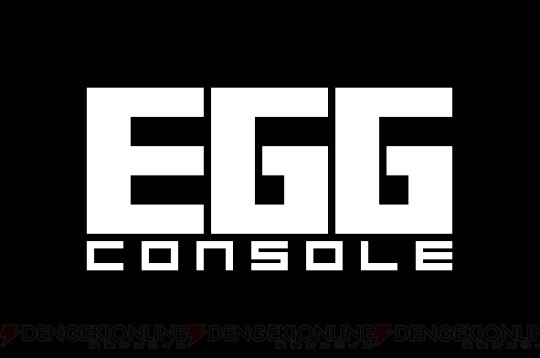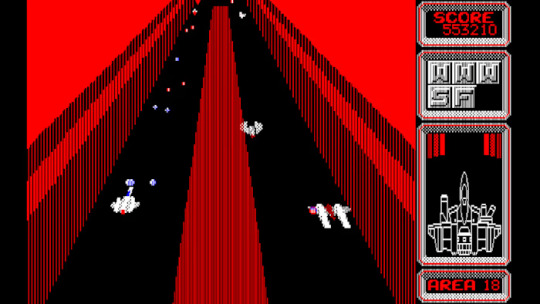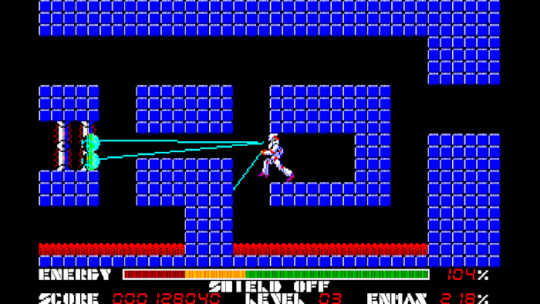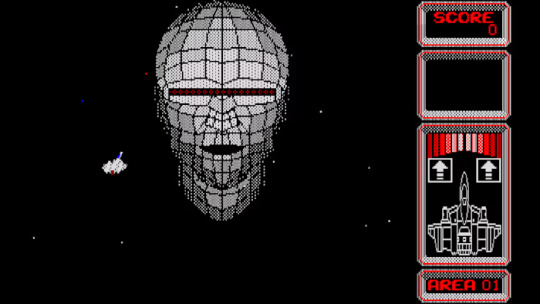#silpheed
Photo

Save the solar system!
'Silpheed'
SEGA Mega CD
219 notes
·
View notes
Photo

USA 1990
#USA1990#EXPRESS ORDER#RETAIL#IBM#JOHN MADDEN FOOTBALL#OUT RUN#SILPHEED#M1 TANK PLATOON#ARKANOID REVENGE OF DOH
24 notes
·
View notes
Text

Silpheed
"This card cannot be Normal Summoned or Set. This card can only be Special Summoned by removing from play 1 WIND monster in your Graveyard. When this card is destroyed as a result of battle and sent to the Graveyard, your opponent discards 1 random card from their hand."
8 notes
·
View notes
Photo

EGM #44, March '93 - A look at ‘Silpheed’ on the SEGA CD.
26 notes
·
View notes
Photo

14 notes
·
View notes
Text







Silpheed (Sega CD 1993)
9 notes
·
View notes
Text
Silpheed (SCD / Game Arts / 1993)
Silpheed wasn’t the only 3D polygonal space shooter released on 16-bit hardware in 1993, but thanks to some clever technical trickery, it may be the fastest and most responsive.
12 notes
·
View notes
Text









PLUMPMOA / ピーエムオフィスエー SA-77 シルフィード / ランサータイプ コンバーチブルキット 再入荷しました。
1 note
·
View note
Text
Welp. Everything else that we've done hasn't worked. So instead of trying to blow things up from a distance, the plan is to blow it up all up close and personal. Which seeing as I've been using napalm the whole game, works for me. #silpheed #ps2 #retro
youtube
#Silpheed#PS2#playstation 2#retro#space shooter#scifi#2000#Silpheed: The Lost Planet#Game Arts#Capcom#Working Designs#vertical-scrolling#single player#arcade#Youtube#Let's Play#3d graphics#SA-77
1 note
·
View note
Text
Go play EGGCONSOLE

The Switch has basically turned into a game historian's dream come true, with classic titles getting ported, remade, remastered and localized for the first time all over the place. From Hamster's weekly Arcade Archives, to M2's fantastic as always work with Sega Ages, and Nintendo's own library available via their online service, there's no shortage of great titles for anyone who wants to revisit their own childhood, or just dive deep to better understand the past.
What I definitely didn't expect was for classic Japanese computer games to start ending up on the console, much less in North America. For a long time, these games have kinda had a forbidden fruit appeal for Westerners, a last frontier of games that was difficult to navigate due to the language barrier, the aging hardware, Windows cannibalizing all other operating systems during the 90's and of course, few of the games being exported over here, but it's gotten a lot better in recent years, mostly thanks to D4 enterprises.
They started with Project EGG, ostensibly Japan's equivalent of GOG, and after a few other ventures on various platforms, they've decided to port their most classic titles to Switch under the label of EGGCONSOLE, including, as I mentioned earlier, on the Western eShop. This seems odd at first, but considering the vintage of these games, they don't have that much Japanese text to parse, and often using joysticks and controllers back in the day, rather than keyboards, meaning they transfer to typical console controllers rather easily (you can still use an emulated keyboard in-game, if you wish).

As you can imagine, not all of the games have aged super gracefully; the action titles are straightforward enough, but the adventure games or RPG's with more complex systems and labyrinth-like levels are a bit too incomprehensible, though the releases have a lot of effort put into them to make sure you can see what they're all about, from level selects, to savestates to rewinds.

The three titles I've definitely put the most time into are Thexder, Silpheed, and Relics. Relics is definitely the most stymieing of the three, but it's so cool I keep trying to slog through it; it's got a body stealing mechanic which is always great, and a cool biomechanical aesthetic way ahead of its time.

But the two titles that are the easiest to get into are sort of a duology that compliment each other, as they're both by Game Arts and insanely impressive on a technical level; Thexder and Silpheed.

Silpheed is insane. I was aware of the Sega CD release before, but I didn't realize it was a sorta-sequel, sorta-remake of the computer original, and that it was basically Star Fox running on an 8-bit computer. I dunno how they got wireframes and polygons like this on the PC-88, but it's insane. The actual gameplay is pretty good, nothing compared to other shmups of the era and especially now, but the level design is pretty good and the weapon loadout select is pretty great, and adds a strategic wrinkle.

Thexder is a sidescrolling mecha-action title, and again, the technical prowess on display really steals the show. The animation on the robot as he lethargically strides forward, then turns into a plane blasting enemies down with an Itano Circus-type laser really makes the whole experience and feels really satisfying, even if the enemy layouts are a little too insane, at times. It's also nice to have a perfectly emulated version on a console since the Famicom version, developed by pre-Final Fantasy Square, was a bit of a disaster, and the PS3 remake (which included the original) is probably gonna be delisted soon.
It really does fill me with a glee that these titles are so much more easily playable now; you can really see how some of them shaped and molded more accessible contemporaries (such as the streamlined RPG's on the Famicom) while having their own identity that would never really be replicated. I'm super excited to see what other titles they rerelease down the line, though I'd really like to see titles from other platforms, like the PC-98, MSX or X68000. Looking at the upcoming titles, they seem to be sticking to PC-88 for now, but there's always hope for the future. For how much we (kinda rightfully) complain about game companies not doing enough to preserve the past, you gotta pay due respect to the few that are, to serve as a blueprint of what we need more of.

0 notes
Text
Last night I had another dream where I was playing the old DOS shmup Silpheed. The dream got a couple of things more-or-less correct, namely that in lieu of any real game-save functionality it had a button you could press that instantly sent you to the highest level you'd ever reached, and the fact that the final boss was this fuckoff-huge space battle station.
However, the dream also somehow got the idea that there were improved graphical settings so that you could make the DOS version look better, uh, if you had a machine which was better than what was literally possible in 1986. It also made the final boss look smaller than it was in the actual game.
0 notes
Video
youtube
Silpheed/シルフィード for Nec Pc-8801 made in 1986 by Game Arts and Takeshi Miyaji
1 note
·
View note
Photo

@Hyperkin #PS2 #HDMI Adapter vs #RetroTink2x Pro (#Silpheed) #shorts #Shmups #STG同好会 - https://youtube.com/shorts/d2QQh4AsYrU https://www.instagram.com/p/CkXts3mOCDA/?igshid=NGJjMDIxMWI=
1 note
·
View note
Text
Early Texturing in Games
For the first arcade game with textures, Ridge Racer is one hell of a showing! Something like this running at 512x384 at 60FPS in '93 would only be matched when the Dreamcast released in 1998

The first game with hardware texturing was surprisingly in the home space: The aptly-named Crash 'n Burn for the 3DO, which came out with the system a few days before Ridge Racer that October. It would be the only 3DO game released in 1993. I don't know for sure, but I have a hunch that its extremely linear gameplay suggests it might be using a system where the vertices (polygon edge points) of the track/environment are pre-calculated and used for when the system actually draws the polygons at runtime, similar to Winter Gold ('96, SNES) or the intro of Silpheed ('86, NEC PC-8801mkIISR)
The first games to use texturing period were both software-rendered DOS games: Catacomb 3D and Ultima Underworld in '91 and '92 respectively.

Catacomb 3D is an Id Software game inspired by an early showing of Ultima Underworld at CES 1990, and it uses a software raycasting engine that would later be popularized by Wolfenstein 3D, Doom 1&2, and Duke Nukem 3D. Only the walls are textured, but hey, it was early days

Ultima Underworld uses a software polygon renderer and is fully textured. It ended up directly inspiring Tomb Raider, and it's not hard to see why. Aside from the tiny viewport, severe texture warping and 2D objects, it's pretty comparable to King's Field 1 from '94 on the PS1!
24 notes
·
View notes
Text
Silpheed (MD Mini 2)

Silpheed is an interesting trick, but it just barely works. At the time, it was kind of mind-blowing. The idea here is that the active objects on the screen are drawn as polygons, while the background is just full-motion video done in a similar style. It's not a flawless illusion. The video moves at a slower framerate than the action, and it's fairly obvious if your attention settles on it. Some objects in the video also look a little flat, making it hard at times to discern what has collision and what doesn't. But your eyes tend to be drawn to the action since this is, after all, a shoot 'em up. Looking away will get you killed fast.
Moving past the visual razzle-dazzle and the excellent soundtrack, Silpheed is merely a decent example of its genre. It's not bad or anything, but the visual confusion is palpable at times thanks to the video backgrounds and skewed angle. It's a very lenient game, allowing you to take plenty of hits before dying, but it almost has to be. You don't get normal power-ups, instead collecting point items and repair items during the stages. In lieu of that, you can earn new weapons and change your load out between levels. One of those games that is fun to play, but perhaps not as enjoyable to finish. Still, it's worth going through at least once to see all it has to offer. I consider this one of the iconic SEGA-CD games, so I'm happy to see it on this mini-console.
3 notes
·
View notes
Text
Sega Mega CD - Star Blade
Title: Star Blade / スターブレード
Developer/Publisher: Technosoft / Namco
Release date: 28 October 1994
Catalogue No.: T-14014
Genre: FMV Rail Shooting


Who would have thought that the Mega CD could handle Namco's Star Blade? Well, not Namco that's for sure, or at least not in the way the arcade and other systems such as the 3DO handled it.
You see, for the Mega CD to push all those polygons about, the enemy ships had to be made from wire frame models rather than filled-out polygons. The backgrounds of course look like the arcade, but these are streamed video data from the CD pretty much in the same way that Silpheed is done, or at least that's what it seems like. I don't think it would be possible for the Mega CD alone to produce so many and such clean looking polygons that make up the background areas in which you fly. Anyway, even if the enemy ships are just wireframe models the actual playing experience is the same.
Seven stages in total of hard-core blasting action controllable by either the Mega Drive mouse or standard control pad, or even the After Burner XE-1 AP controller.


youtube
2 notes
·
View notes